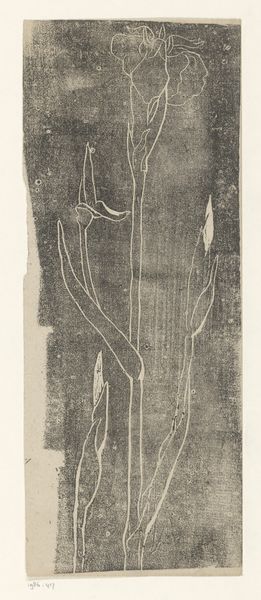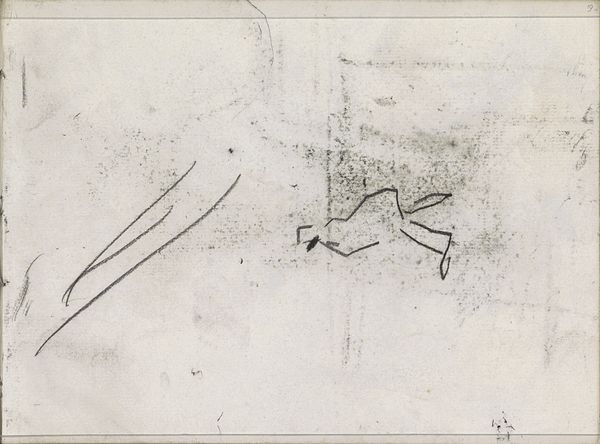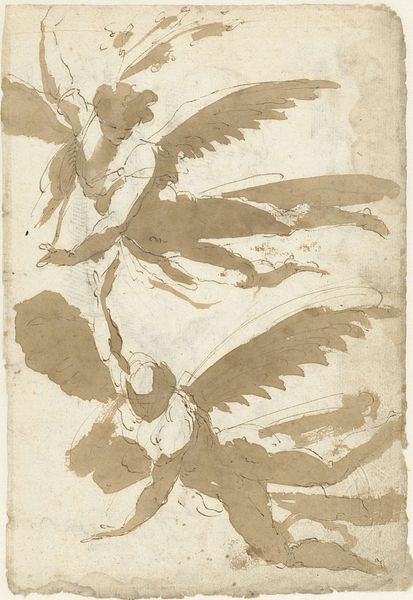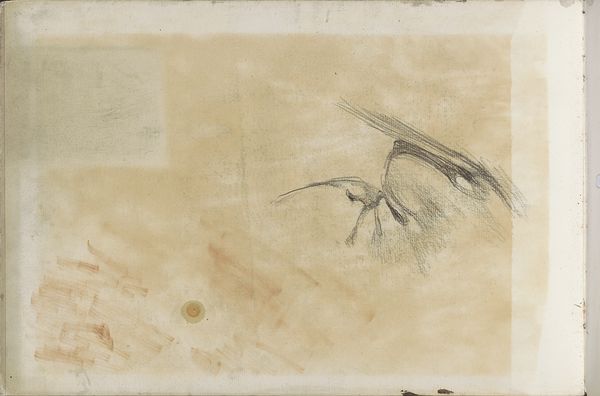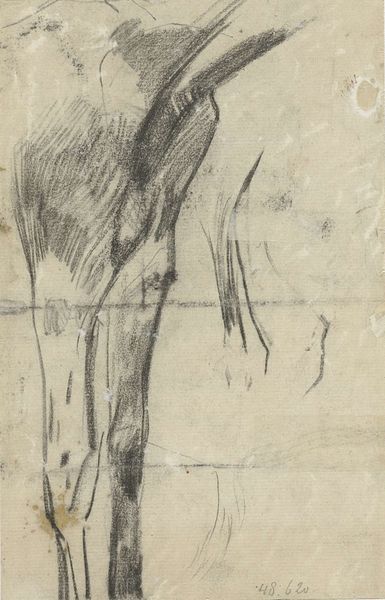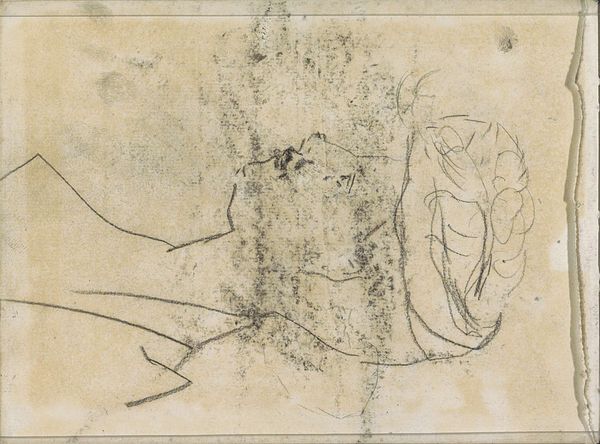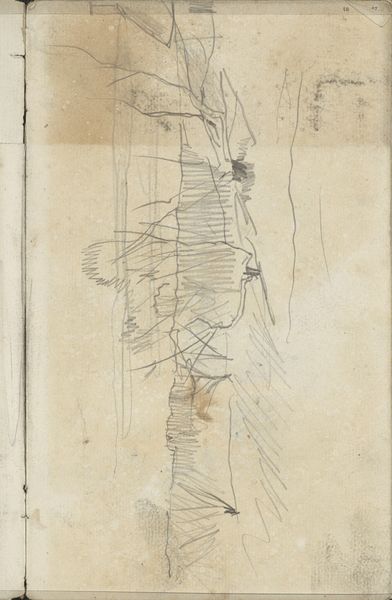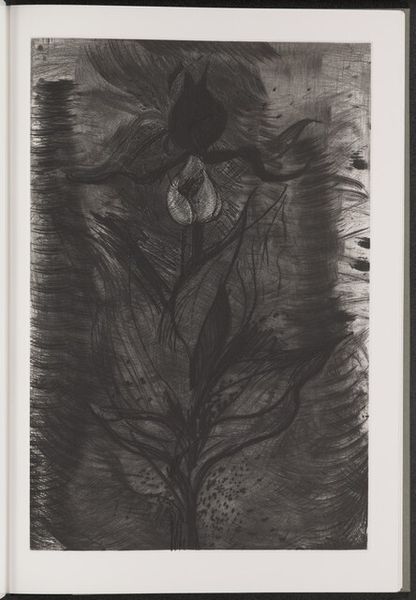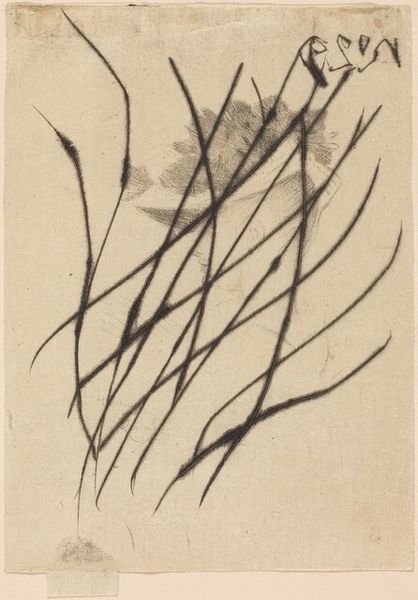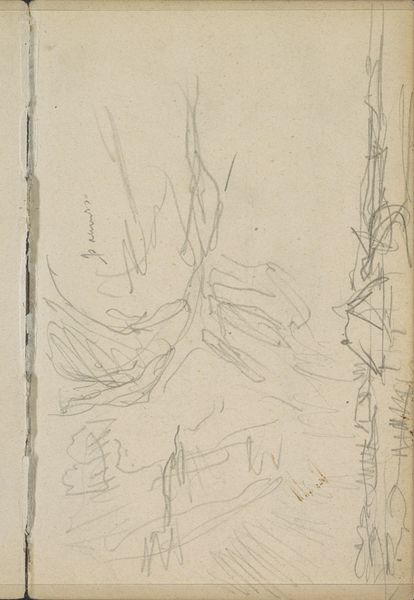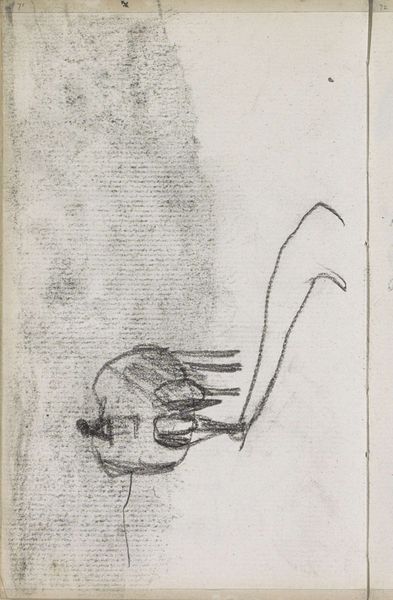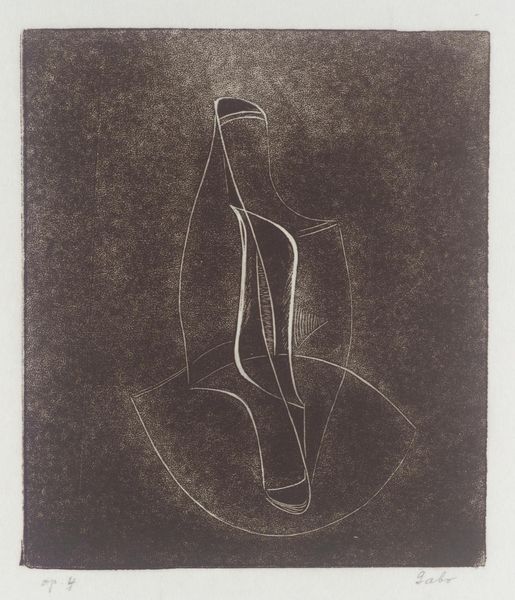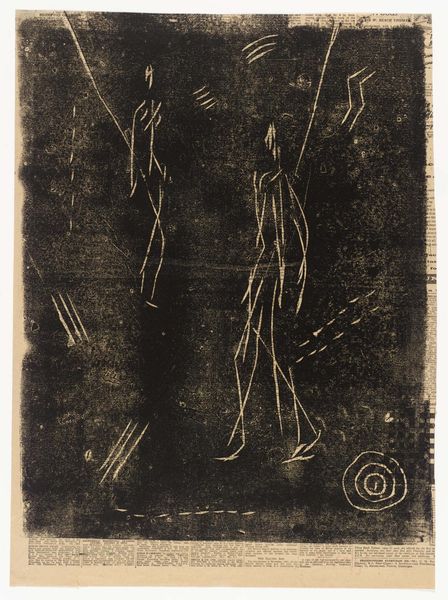
drawing, paper, graphite
#
pencil drawn
#
drawing
#
toned paper
#
light pencil work
#
pencil sketch
#
etching
#
paper
#
abstraction
#
line
#
graphite
Copyright: Rijks Museum: Open Domain
Editor: Here we have Isaac Israels' "Studie," made sometime between 1875 and 1934. It's a drawing in graphite, etching, and pencil on paper, currently housed at the Rijksmuseum. I’m immediately struck by its simplicity and how the minimalist lines manage to suggest form. What's your take on this work? Curator: I see a quiet commentary on artistic representation itself. Given the period, consider the rapid industrialization and social shifts. Israels, instead of grandiose portrayals, offers a 'study' – an intimate, almost vulnerable, glimpse into the process of seeing. How might this 'unfinished' quality reflect the changing role of art in a world overwhelmed by mass production and shifting social structures? Editor: So, you’re saying the incompleteness is a deliberate statement? Curator: Precisely. Think about how academic art traditionally valued polished, finished pieces. Israels presents something raw. What does that suggest about the artist's intentions, perhaps his rejection of established artistic norms and his embrace of a more immediate, subjective mode of expression? What social norms are defied here by offering what might be traditionally viewed as 'practice' as art in itself? Editor: I see what you mean. It challenges the idea of art as solely a perfectly rendered product. By showing the bare bones, Israels gives us access to his creative process. Curator: Absolutely. And that accessibility, particularly in a time of rigid class structures within art, makes a statement. Is it democratic? Perhaps an invitation for broader participation in understanding and appreciating art beyond technical perfection? How can we apply this approach today, in a world saturated with digital perfection? Editor: That’s a powerful way to look at it. It pushes me to consider art beyond just aesthetics, focusing more on its role in societal discourse. Curator: Exactly! And hopefully it'll encourage all of us to appreciate art with broader critical awareness, challenging conventional norms and embracing diverse perspectives.
Comments
No comments
Be the first to comment and join the conversation on the ultimate creative platform.
